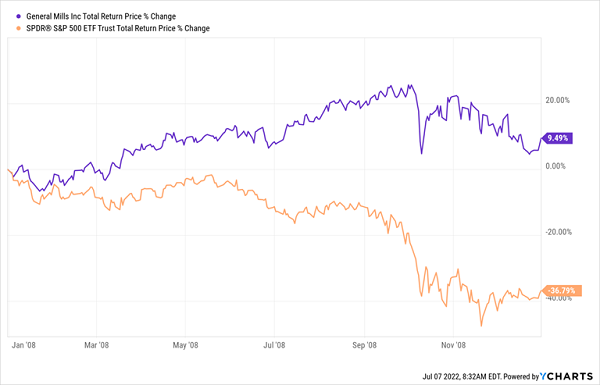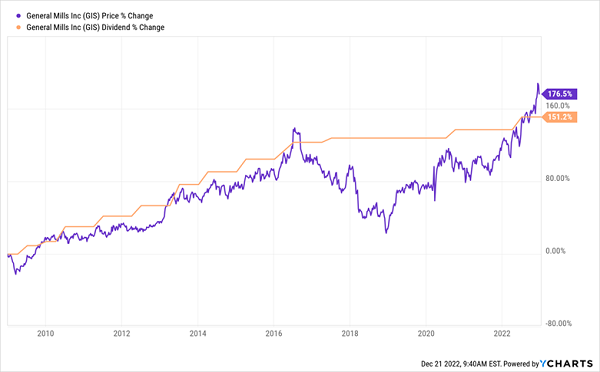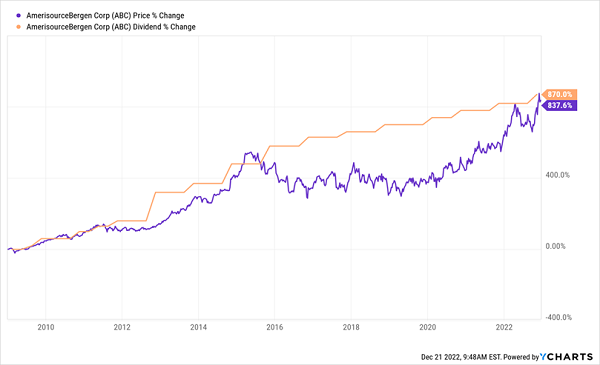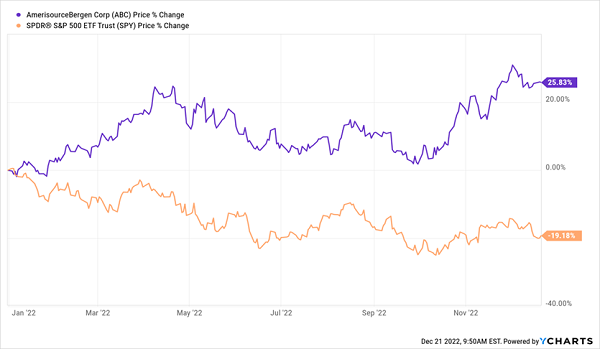A Smart Long-Term Strategy That Delivered 870% Dividend Growth
2022.12.27 07:03
[ad_1]
Today I’m going to show you a two-part dividend-growth strategy that made money for one group of investors in the disastrous year 2008.
Before we get into the specifics of this technique and an example stock, I want to level with you: I believe stocks are likely to head lower in the coming weeks.
That said, if we look one year out from today, I like our chances. But we’re going to give ourselves an added level of security by purchasing stocks with these two traits:
- Strong—and better yet accelerating—dividend growth because a rising payout is the No. 1 driver of share prices. And …
- A low beta: Beta is a volatility measure, and you can spot it on most screeners. Simply put, a stock with a beta of 1 trades more or less alongside the market. Betas below 1 are less volatile than the market, while those above are more volatile.
Combine a low beta and an accelerating dividend, and the result can be a truly powerful income-and-growth machine, with the rising payout pulling up the price. In contrast, the low beta rating throws a floor under the shares when market storms hit.
The classic example of a low-beta dividend grower defying a crash came the last time a financial crisis (as opposed to a health crisis) walloped the market. That was 2008, a year that, as most of us painfully remember, wiped 37% off the . But General Mills (NYSE:), which has a history of being a lot less volatile than the market, sailed through.
During 2008, its five-year beta averaged just 0.23, meaning it was only 23% as volatile as the S&P 500. The reality turned out even better for GIS shareholders: the stock was one of a tiny handful to come through that disastrous year with a gain—and a decent one at that:
General Mills: The Classic Low-Beta Survival Story

GIS Outperforms 2008
Even when General Mills’ stock bottomed that year, in December, it was still up nearly 2% from its January 2008 level. The only problem with General Mills today is that its dividend growth is not only meager but decelerating.
General Mills’ Underfed Dividend

GIS Slowing Dividend
Sure, the payout has been up 151% since the end of ’08. That’s okay—and its Dividend Magnet has pulled up the share price in lockstep. But as you can see on the right side of the chart, the dividend hasn’t made much headway in the last six years. That seems unlikely to change as inflation drives up the company’s ingredient costs.
To be sure, GIS remains a decent stock to hold—thanks to its low beta, it’s unlikely to fall as far as the market on the next leg down. But there are far better examples of combining a Dividend Magnet and a low beta rating for superior returns.
AmeriSource Bergen’s Shocking 870% Dividend-Growth Story
Check out the difference in dividend growth since ’08 compared to General Mills: it’s not even close! ABC’s explosive payout growth has driven a price gain 4.5-times bigger:
ABC Shows What a Real Dividend Magnet Can Do

ABC Dividend Price Chart
Also, note the stock’s accelerating payout growth in recent years. Thanks to its five-year beta of just 0.54, this one should be 46% less volatile than the S&P 500. But this year, like GIS in ’08, it’s done a lot better: as the market sunk 19%, ABC’s return was well into positive territory. It didn’t get the memo that 2022 was terrible for stocks!
“Low Drama” ABC Defies Gravity

ABC Outperforms 2022
The key takeaway is that a fast dividend grower like ABC offers the opportunity to build a safe, high dividend over time. Folks who bought back in ’09, for example, would yield 11% on their original buy, thanks to the stock’s 870% dividend growth.
Disclosure: Brett Owens and Michael Foster are contrarian income investors who look for undervalued stocks/funds across the U.S. markets. Click here to learn how to profit from their strategies in the latest report, “7 Great Dividend Growth Stocks for a Secure Retirement.”
[ad_2]








